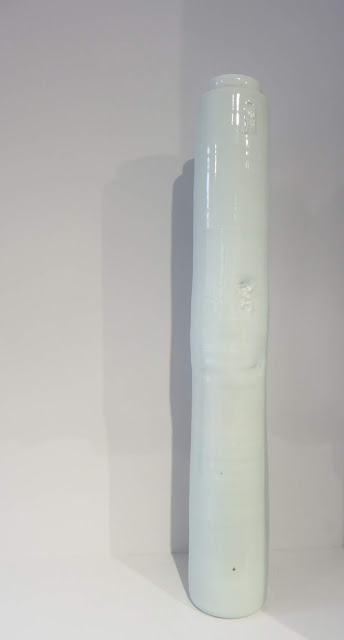Hand Drawn Action Packed at the St Albans Museum and Art Gallery.
This exhibition, curated by Hayward Gallery Touring, showcases the works of ten artists whose practice springs from drawings and reveals the medium's infinite possibilities. The artists come from around the world.
Yun-Fei Ji:
Ji's brush and ink landscapes are made in the manner of Chinese narrative scroll painting.
The artist was inspired to revive this forgotten tradition after an encounter with ancient Buddhist cave frescoes in Tibet. While his soft colour palette and refined lines appear to create a serene, pastoral atmosphere, on closer inspection it becomes clear that his subject matter subverts the traditional
style, depicting contemporary scenes of social injustice. A child of the Cultural Revolution in China, his drawings tell the stories of political realities: dispossession, forced migration and dictatorial power.
In these drawings beasts and birds, who represent odious officials, are illustrated alongside instruments of propaganda. Humans mingle with grotesque skeletons and ghosts, in an allusion to the rural Chinese custom of moving the bones of their ancestors to a new resting place when villagers are forced to relocate. Speaking of his drawings, Yun-Fei Ji says,
'they may be lyrical but they are also satirical. It's a story of displaced people'.
looking closer
looking closer
looking closer
William Kentridge:
William Kentridge makes what he calls his 'stone age' animations by erasing or altering a drawing many times, capturing a photographic image of each stage and using them to create the cinematic illusion of a flickering narrative. He uses charcoal because of its tonal range, and the ease and speed with which it can be changed, allowing the narrative to evolve through the activity of drawing.
These intimate drawings of a female figure getting into the bath demonstrate the artist's method, although in this case the drawings did not result in a film but remain a static series. Presented sequentially - with a time stamp in each corner - the movement of the woman at her toilette is played out across nine frames.
The dramatic contrasts of light and dark in these drawings, splashed and shaded with gouache, give a sense of the physical action of making them. Traces of red chalk underpin the otherwise monochrome works, framing the composition and anchoring the forms.
Marcel Dzama:
Dzama conjures a theatrical world of masked and costumed performers. In 1996 the artist co-founded The Royal Art Lodge in Winnipeg, Canada, a collaborative artists' group dedicated to drawing with a surreal, mildly perverse twist of humour. Two years later he moved to New York and set about creating an expanding cast of costumed and masked characters in ever more extravagant scenarios.
Inspired by the climactic scenes in opera and ballet, Dzama's most epic compositions are elaborately choreographed and populated with multiple performers.
The artist's distinctive palette of root beer browns evokes the 1920s era of avant-garde experimentation. The titles Resist! and My sisters in arms speak of revolution: the women stand poised in symbolic defiance.













































































